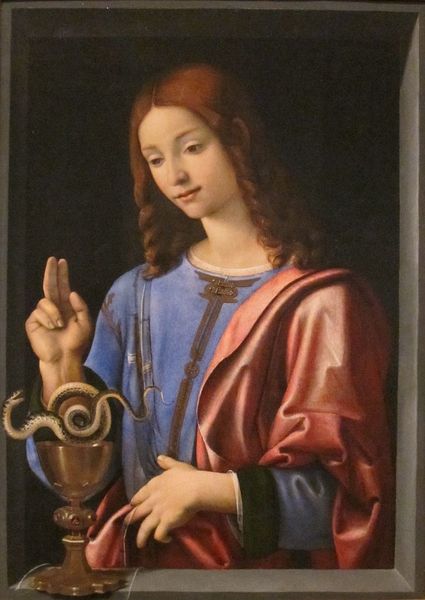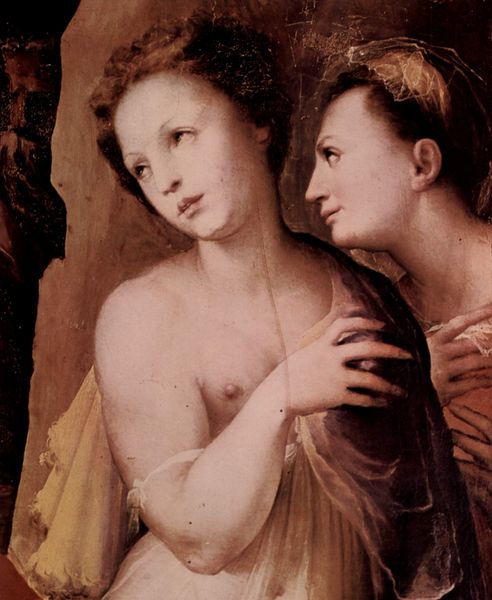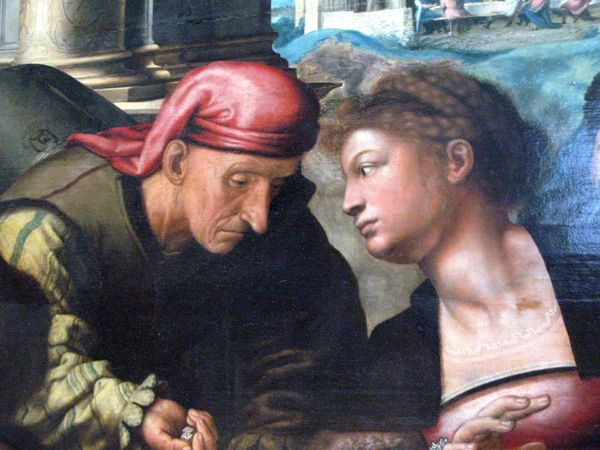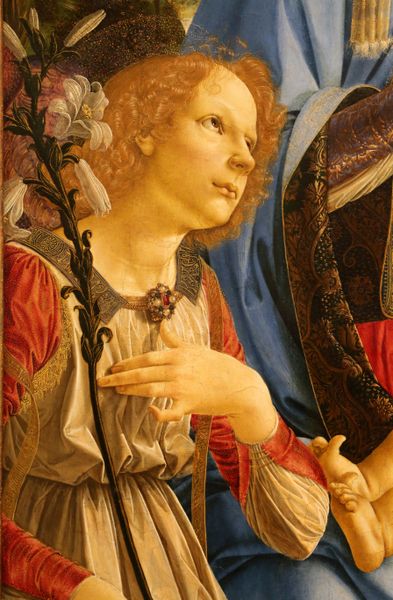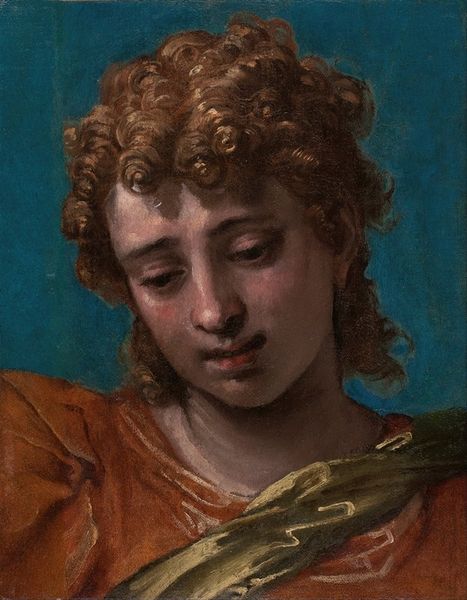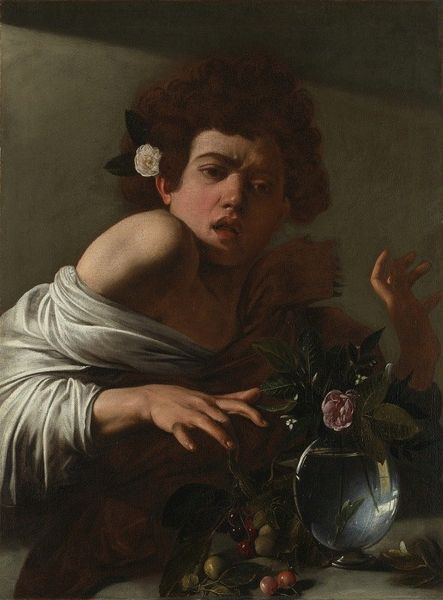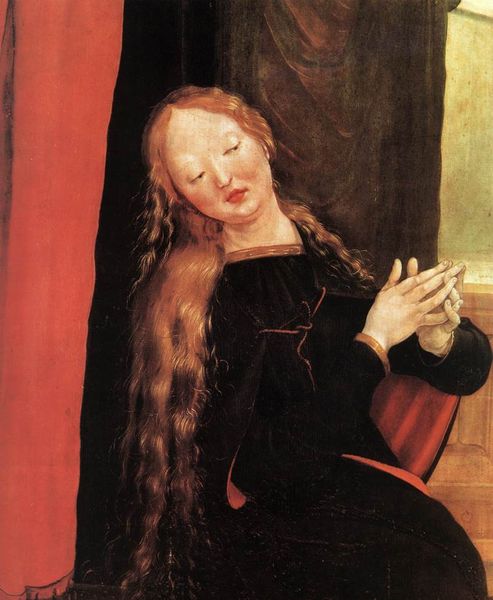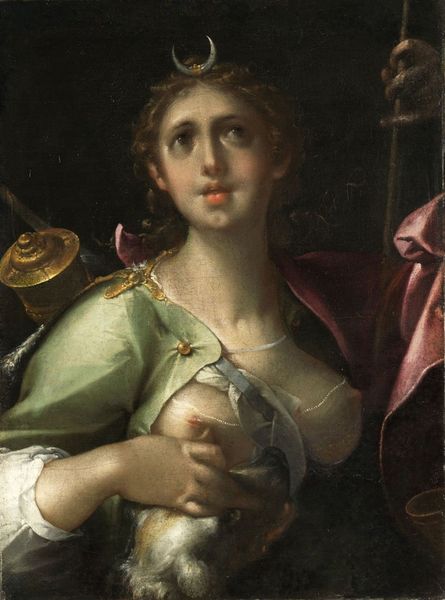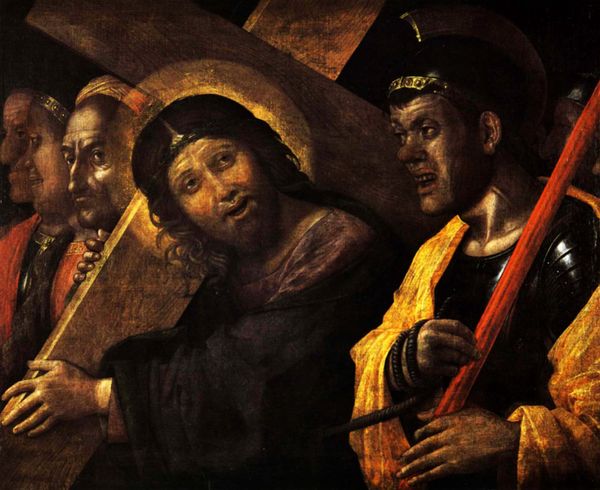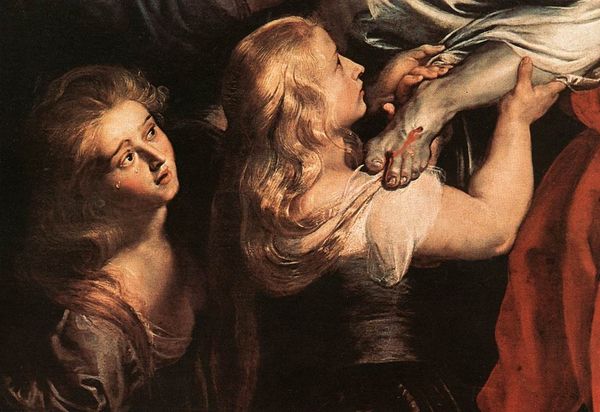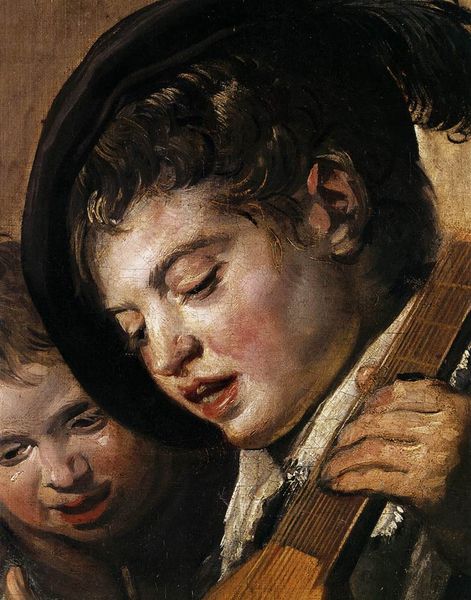
Parable of the Prodigal Son (detail) 1536
0:00
0:00
janvanhemessen
Royal Museums of Fine Arts of Belgium, Brussels, Belgium
painting, oil-paint
#
portrait
#
character portrait
#
narrative-art
#
painting
#
oil-paint
#
figuration
#
christianity
#
genre-painting
#
facial portrait
#
northern-renaissance
#
portrait art
Copyright: Public domain
This detail of the Parable of the Prodigal Son, by Jan van Hemessen, presents us with a lavishly dressed man and a gesture of extending the hand to receive. This symbol, deeply embedded in our cultural memory, extends back to ancient times, representing the exchange or transfer of goods, power, or blessings. Consider the Roman tradition of *dextrarum iunctio*, the joining of hands in marriage, or the ritualistic handshakes signifying agreements in ancient legal contexts. Here, the act takes on a more transactional nature. The hand becomes a vessel, a means to an end. This motif has been passed down through history, shifting in meaning as it resurfaces in different contexts. The emotional undercurrent of this image reveals a universal longing for acceptance and belonging and the cyclical nature of human experience—sin, repentance, and forgiveness. We find ourselves drawn into this timeless narrative, reminded of our collective and subconscious recognition of these symbols. It is a poignant exploration of human error and redemption.
Comments
No comments
Be the first to comment and join the conversation on the ultimate creative platform.
